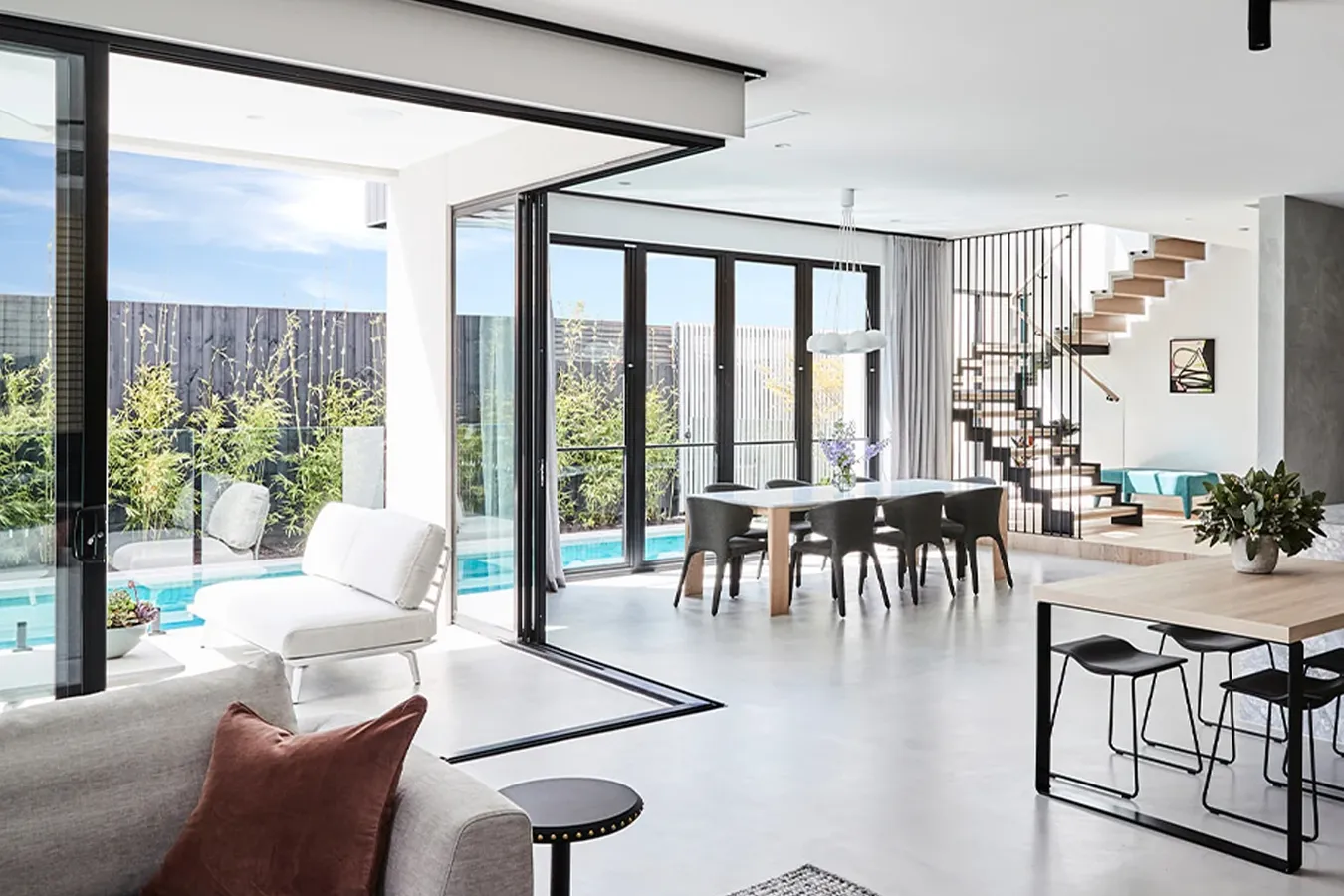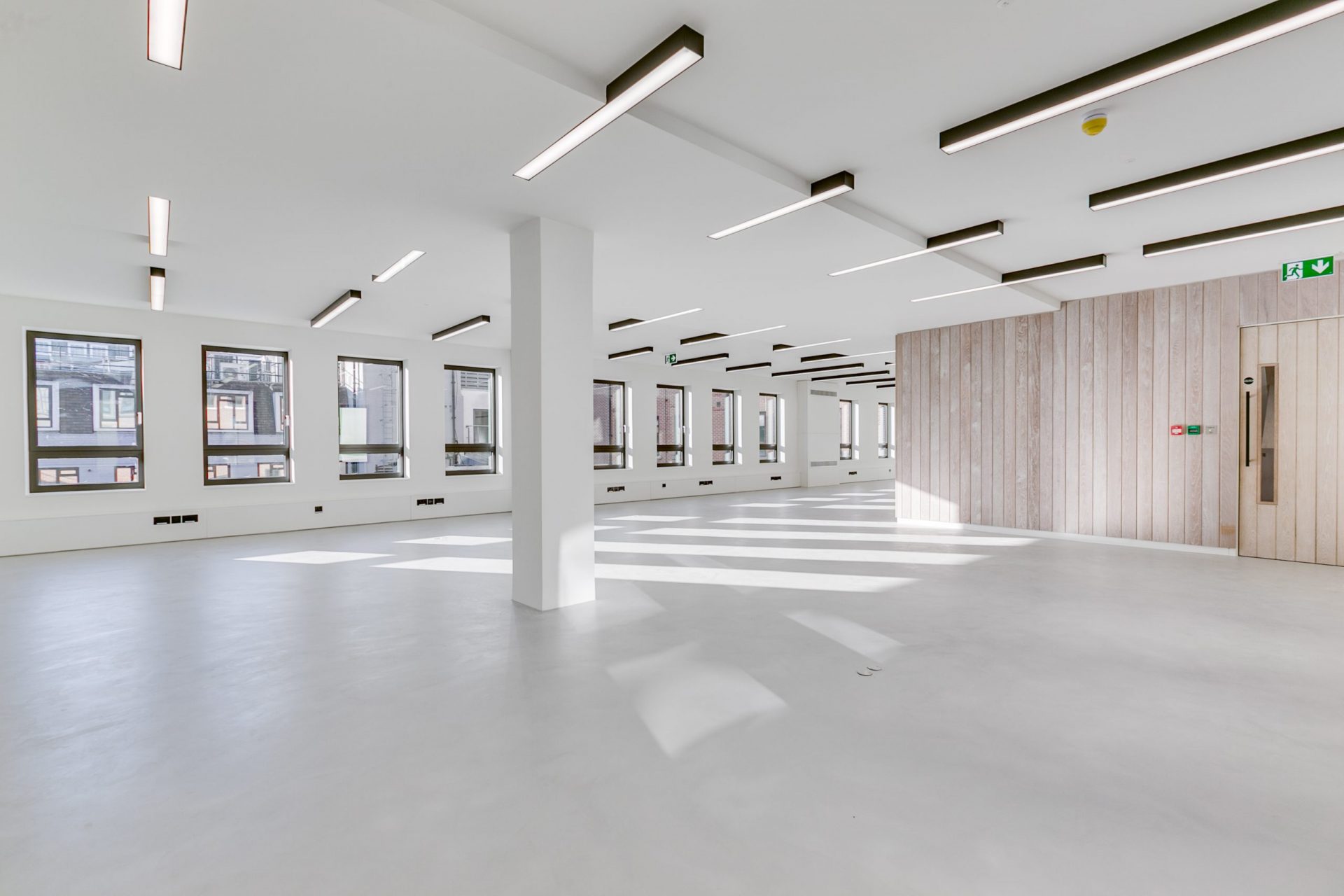Blog / Microcement vs Polished Concrete
When it comes to flooring options, microcement and polished concrete have gained significant popularity due to their sleek and modern appearance, durability, and versatility.
TOPCRET
8-9 minutes time reading

In this article, we will explore the differences between microcement and polished concrete, comparing their qualities, advantages, disadvantages, finishes, applications, pricing, and more.
Polished concrete, also known as screed concrete, is a decorative finish rather than a pure cladding.
It is used in indoor and outdoor areas like parking, shopping centres, extensions, and living rooms.
When it comes to comparing microcement and polished concrete, one common question we often receive is about the benefits of microcement over polished concrete. Based on our extensive experience in the field, we have identified several key advantages of microcement:
Microcement can be applied at a depth of only 2-3mm (excluding any necessary preparation). This is significantly thinner than the minimum thickness of 100mm typically required for a polished concrete floor. The reduced thickness makes microcement a suitable choice when height limitations are a concern.
Microcements are highly versatile and can be applied on various surfaces such as walls, floors, ceilings, and stable substrates in both residential and commercial environments. This flexibility expands the design possibilities and allows for cohesive aesthetics throughout a space.
Unlike polished concrete, microcement application does not typically require heavy and noisy grinding or diamond polishing tools. This aspect makes microcement installation feasible in areas where traditional polished concrete would have been impractical or disruptive.
The application time for a microcement finished floor is significantly reduced compared to that of a polished concrete surface. Typically, a standard microcement installation takes around 4-5 days (which may vary depending on the size and complexity of the project). The faster drying time allows for quicker project completion.
Due to the reduced installation time requirements, microcement can be applied towards the end of a project. This timing flexibility reduces the risk of damage or compromise resulting from other trades or third-party activities. For example, microcement installation can take place once a kitchen has been fully installed.
Microcements offer the advantage of retro-fitting in many cases. As long as the existing substrates are stable, microcement can be applied over various floor finishes with minimal height build-ups or the need for extensive excavation.
Microcement is compatible with underfloor heating systems due to its high thermal conductivity, while polished concrete is not.
Microcement can be applied directly to existing surfaces without producing debris, while polished concrete requires construction work that generates debris.
Polished concrete requires expansion joints every 4 to 5 meters to accommodate potential movement, whereas microcement is a continuous covering and doesn’t require expansion joints.
In conclusion, microcement presents several distinct advantages over polished concrete, including greater control over aesthetics, thinner application thickness, versatility in usage, reduced reliance on heavy machinery, faster installation time, flexible timing, retro-fitting possibilities, and improved resistance to cracking. These factors make microcement a compelling option for those seeking a customizable and practical flooring solution.
Yes, polished concrete can be applied outdoors.It’s durability makes it a suitable option for exterior applications.
While it is commonly used for indoor flooring, with proper precautions and sealing, polished concrete can also withstand the elements and be a durable and attractive option for outdoor spaces. However, it is important to consider the specific climate and environmental conditions of the outdoor area. In areas with extreme temperature fluctuations, high levels of moisture, or exposure to direct sunlight, additional protective measures and regular maintenance may be necessary to ensure the longevity and appearance of the polished concrete surface. Consulting with professionals experienced in outdoor applications can help ensure the best results for an outdoor polished concrete project.
While polished concrete is a popular choice for outdoor applications, some individuals may prefer the unique qualities of microcement outdoor. With its exceptional durability and weather resistance, outdoor microcement offers a seamless and long-lasting solution for outdoor surfaces. By consulting with professionals experienced in both polished concrete and microcement applications, you can explore the benefits of microcement outdoor and make an informed decision for your outdoor project.
Polished concrete has numerous advantages that make it a practical choice for various surfaces. Among its advantages, we find:
Polished concrete has some drawbacks:
While polished concrete is often associated with grey finishes due to its typical applications, there are more daring colour options available, such as black, red, and green. These colours can be used in airports, car parks, garages, shopping centres, and factories.
Polished concrete offers a limited amount of finishes to suit the design preferences. These finishes include:
Polished concrete bathrooms do not exist. This type of finish is often confused with other decorative coatings such as burnished concrete or microcement washbasins.
Microcement is a popular choice for bathroom renovations due to its versatility, waterproof and non-slip properties.
Polished concrete floors have become a popular choice for both residential and commercial spaces, offering a blend of aesthetic appeal, durability, and low maintenance. Here’s a deep dive into the various aspects that make polished concrete floors a compelling option.
Polished concrete is not just your regular concrete; it undergoes a specific process involving chemical densifiers and diamond polishing tools. This treatment gives it a smooth, shiny, and durable surface, setting it apart from standard concrete floors.
One of the standout features of polished concrete is its aesthetic versatility. It can mimic the appearance of high-end materials like marble and granite, offering a luxurious look without the hefty price tag. You can also choose from a range of colours to match your interior design.
While the initial cost might seem high, polished concrete floors are a long-term investment. They are extremely durable and require minimal maintenance, which makes them cost-effective in the long run. The cost per square metre can vary, but it’s generally competitive when compared to other high-end flooring options.
The installation process for a polished concrete floor is similar to other types of concrete flooring. It involves preparing the ground, shuttering, pouring concrete, checking slab thickness, curing concrete, and polishing the floor.
Here is a general overview of the process:
It is important to note that creating a polished concrete floor is a skilled process that requires expertise and specialized equipment. Hiring a professional contractor experienced in polished concrete is recommended to ensure the best results and a long-lasting, beautiful floor.
The overall expense can vary based on the specific finish you’re looking for and the preparatory work needed prior to laying the concrete. Generally speaking, you can expect a freshly poured, finished, and sealed polished concrete floor to set you back approximately £120-150 per square metre.
Polished concrete floors are relatively low-maintenance. Similar to a granite countertop, they require sealing for optimal performance, given their natural composition.
For daily cleaning, a simple sweep or vacuum is sufficient to get rid of dirt and dust. Warm water can be used for mopping. Immediate action is advised for spills to avoid potential stains.
For a more thorough cleaning, opt for a PH-neutral cleaner and apply it with a soft mop or cloth. It’s crucial to avoid abrasive cleaning agents, as they can scratch the surface and diminish its shine.
Periodic resealing is recommended, the frequency of which will depend on the level of foot traffic and overall usage.
The price of polished concrete per square metre depends on various factors, including floor dimensions and location.
Generally, the cost ranges between £120-150 per square metre. Factors such as professional rates and the time of year the work is carried out can also affect the final cost.
In some outdoor applications, the overall cost may be higher.

In conclusion, while polished concrete and microcement may appear similar at first glance, they have distinct characteristics, applications, and advantages.
Polished concrete, with its thickness and durability, is well-suited for industrial settings and heavy traffic areas but may not be the best choice for residential or commercial interiors.
By understanding the differences between these two materials, you can make an informed decision when choosing the right solution for your specific needs and preferences.
CONTACT
NEWSLETTER

PROFESIONALS
COMPANY
CONTACT
NEWSLETTER
